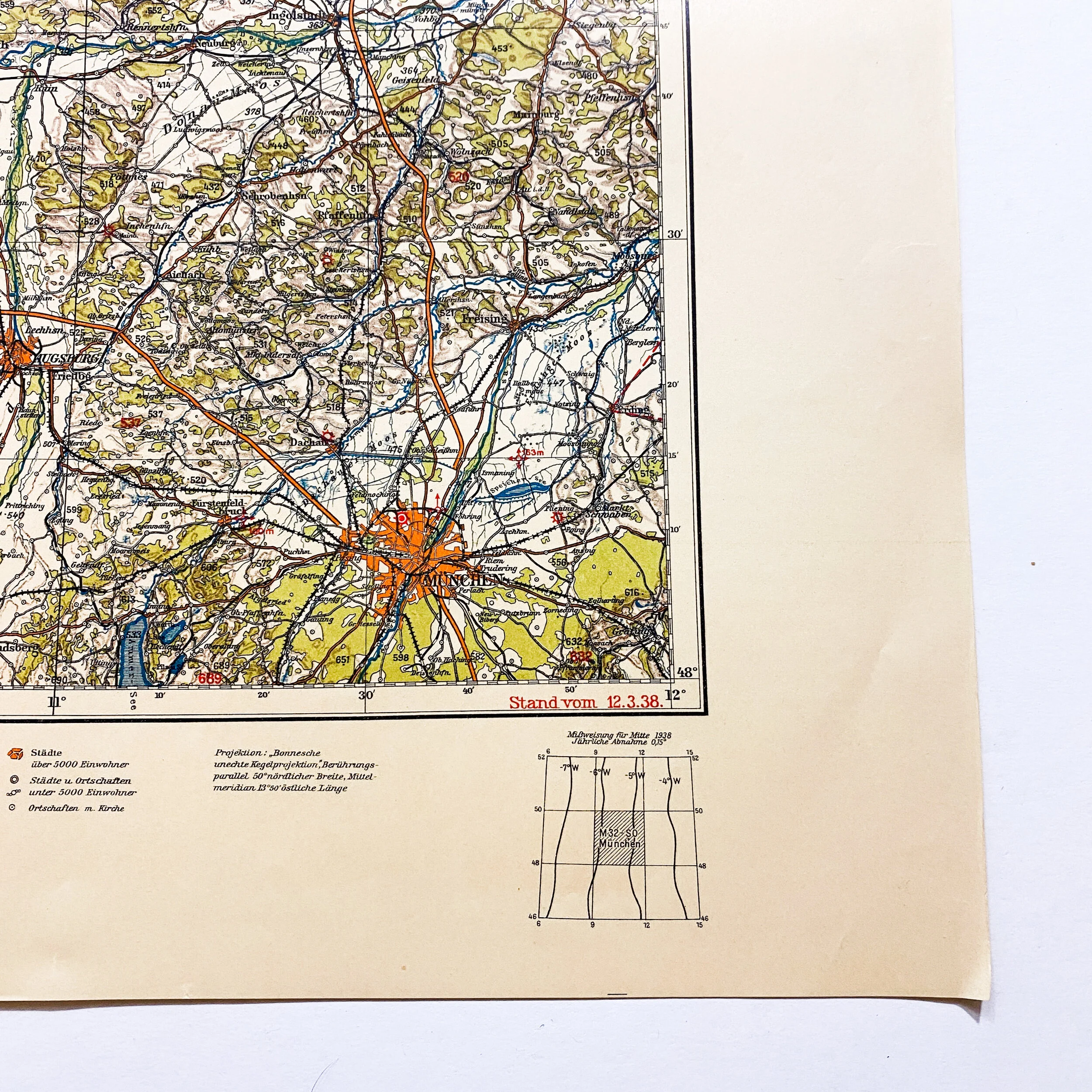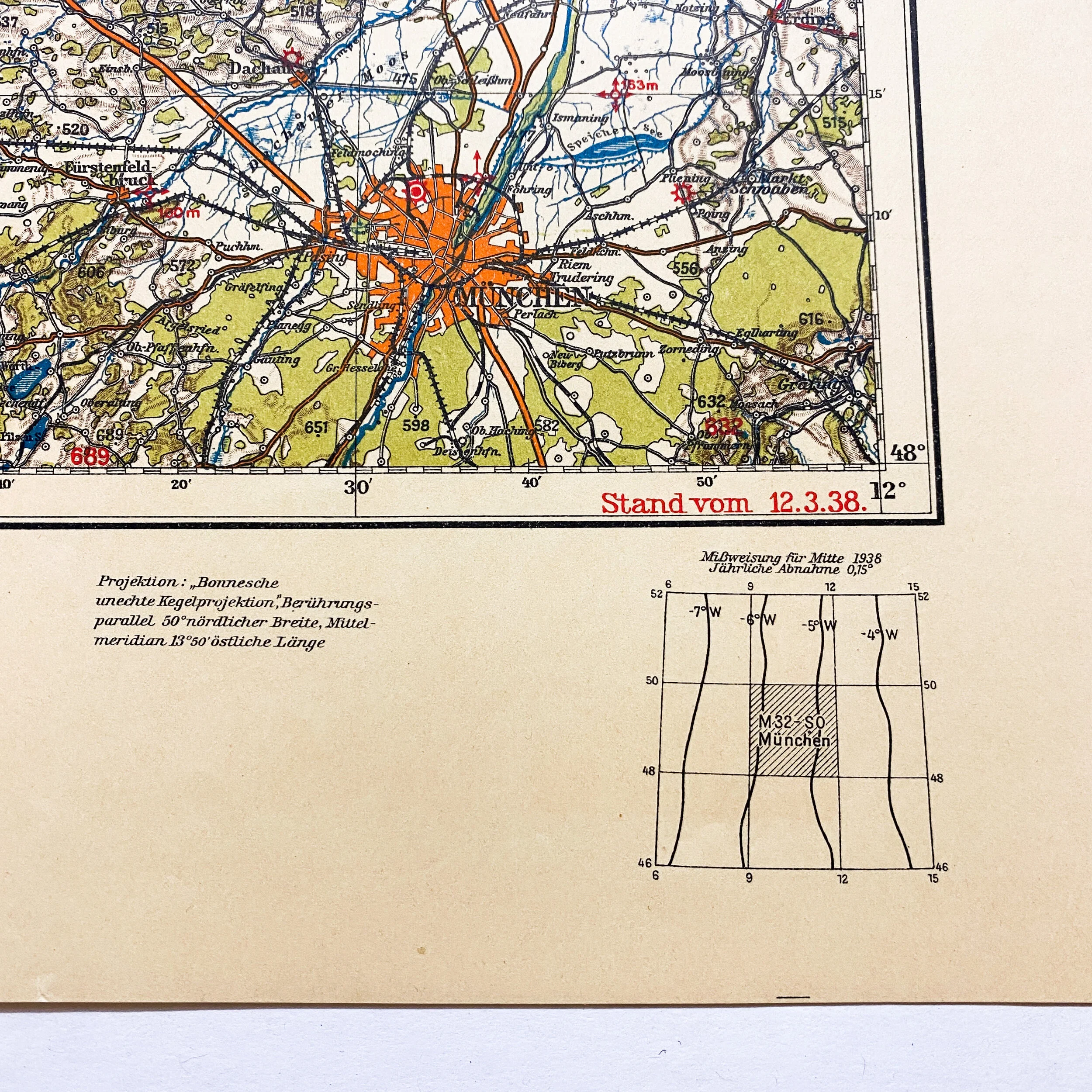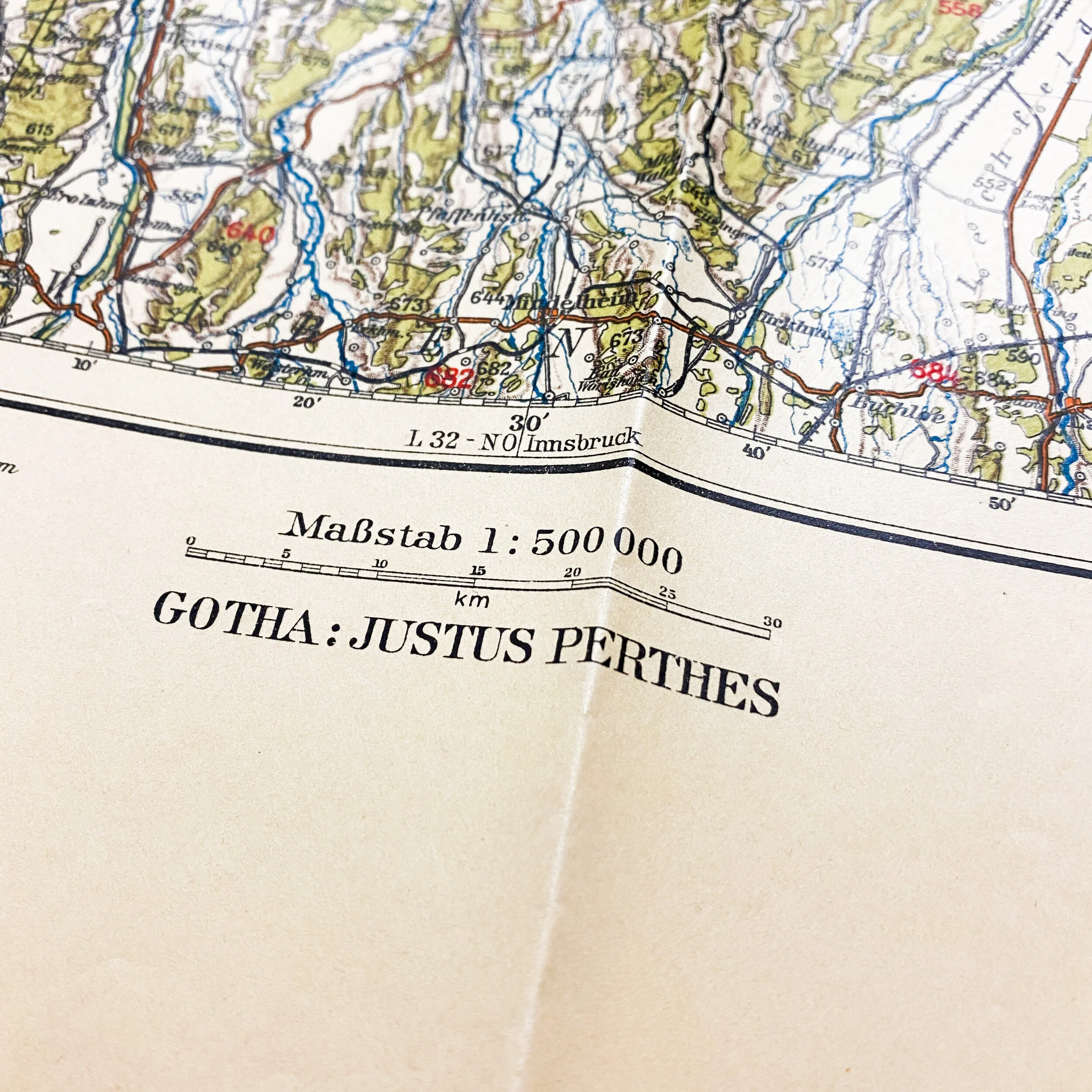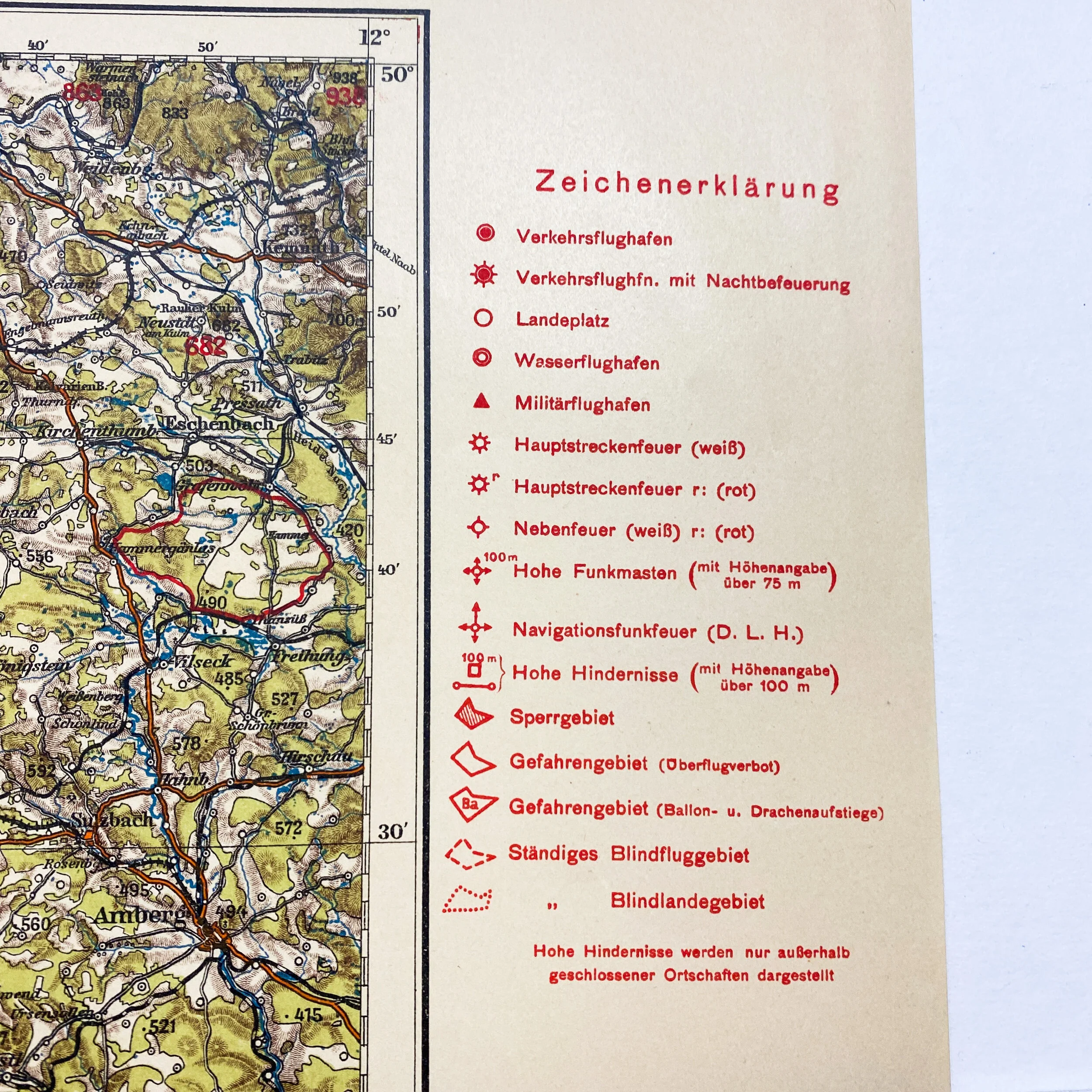1938 Dated German "Munchen" (Munich) Map - Shows Area of 'Dachau Concentration Camp'













1938 Dated German "Munchen" (Munich) Map - Shows Area of 'Dachau Concentration Camp'
Size: 21.5 x 22.5 inches
This early war German infantry combat map is titled “Munchen” or Munich. The city once again became a Nazi stronghold when the Nazis took power in Germany in 1933. The Nazis created the first concentration camp at Dachau, 10 miles northwest of the city. Because of its importance to the rise of Nazism, the Nazis called Munich the Hauptstadt der Bewegung ("Capital of the Movement"). The NSDAP headquarters were in Munich and many Führerbauten ("Führer-buildings") were built around the Königsplatz, some of which have survived to this day. During the Night of the Long Knives in 1934, Hitler eliminated potential political rivals. Ernst Röhm was killed in Munich's Stadelheim Prison.
The city was very heavily damaged by Allied bombing during World War II—the city was hit by 71 air raids over a period of six years. As the bombings continued, more and more people moved out. By May 1945, 337,000 people (41%) had left. The final battle for Munich began on 29 April 1945, when the US 20th Armored Division. US 3rd Infantry Division, US 42nd Infantry Division and US 45th Infantry Division assaulted through the outskirts of the city, also liberating Dachau concentration camp in the process.
Based on the early war date, this map was used while the Dachau Concentration Camp was fully operational. Munich was a very important city for Hitler and the German Army as this geographical area saw much movement of German troops in the area.
Dachau:
Dachau (/ˈdɑːxaʊ/) was a Nazi concentration camp opened in March 1933, which was initially intended to hold political prisoners. It is located on the grounds of an abandoned munitions factory northeast of the medieval town of Dachau, about 16 km (10 mi) northwest of Munich in the state of Bavaria, in southern Germany. After its opening by Heinrich Himmler, its purpose was enlarged to include forced labor, and, eventually, the imprisonment of Jews, German and Austrian criminals, and finally foreign nationals from countries that Germany occupied or invaded. The Dachau camp system grew to include nearly 100 sub-camps, which were mostly work camps or Arbeitskommandos, and were located throughout southern Germany and Austria. The main camp was liberated by U.S. forces on 29 April 1945.